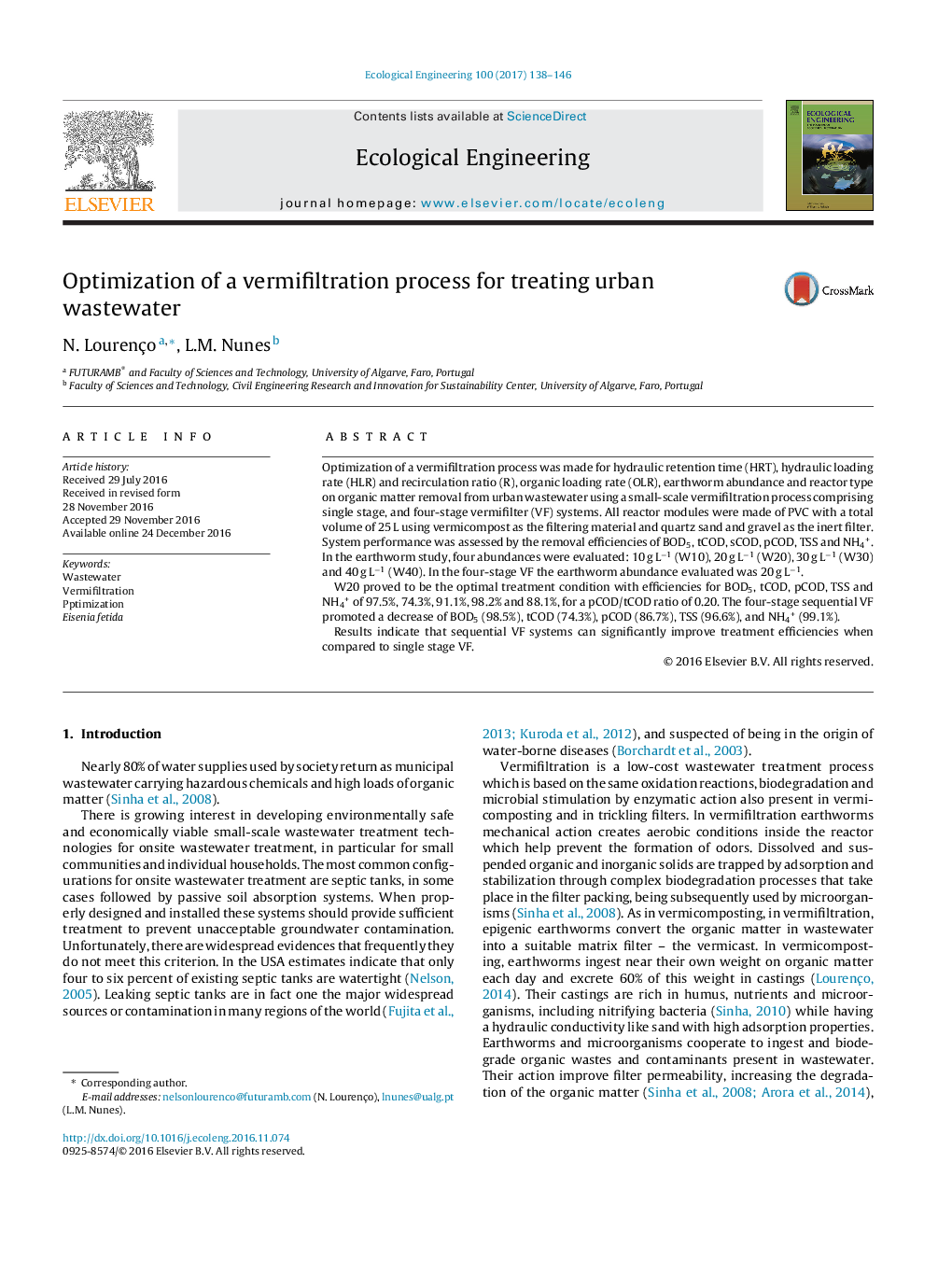| Article ID | Journal | Published Year | Pages | File Type |
|---|---|---|---|---|
| 5743714 | Ecological Engineering | 2017 | 9 Pages |
Optimization of a vermifiltration process was made for hydraulic retention time (HRT), hydraulic loading rate (HLR) and recirculation ratio (R), organic loading rate (OLR), earthworm abundance and reactor type on organic matter removal from urban wastewater using a small-scale vermifiltration process comprising single stage, and four-stage vermifilter (VF) systems. All reactor modules were made of PVC with a total volume of 25 L using vermicompost as the filtering material and quartz sand and gravel as the inert filter. System performance was assessed by the removal efficiencies of BOD5, tCOD, sCOD, pCOD, TSS and NH4+. In the earthworm study, four abundances were evaluated: 10 g Lâ1 (W10), 20 g Lâ1 (W20), 30 g Lâ1 (W30) and 40 g Lâ1 (W40). In the four-stage VF the earthworm abundance evaluated was 20 g Lâ1.W20 proved to be the optimal treatment condition with efficiencies for BOD5, tCOD, pCOD, TSS and NH4+ of 97.5%, 74.3%, 91.1%, 98.2% and 88.1%, for a pCOD/tCOD ratio of 0.20. The four-stage sequential VF promoted a decrease of BOD5 (98.5%), tCOD (74.3%), pCOD (86.7%), TSS (96.6%), and NH4+ (99.1%).Results indicate that sequential VF systems can significantly improve treatment efficiencies when compared to single stage VF.
